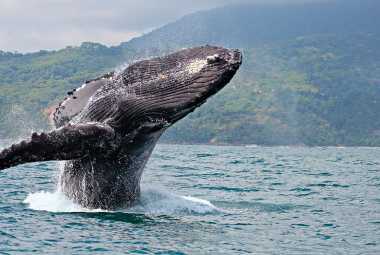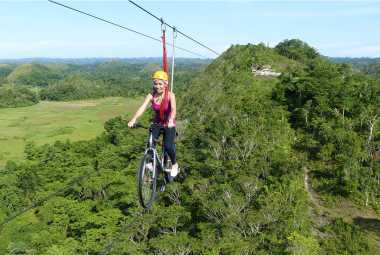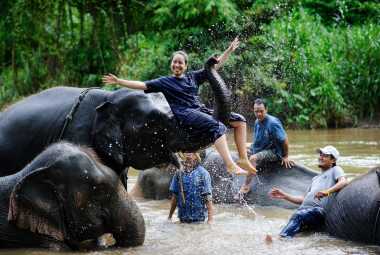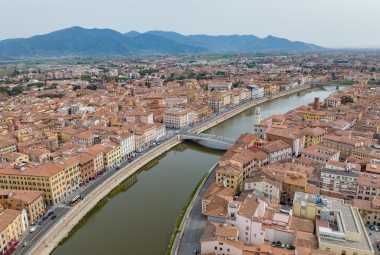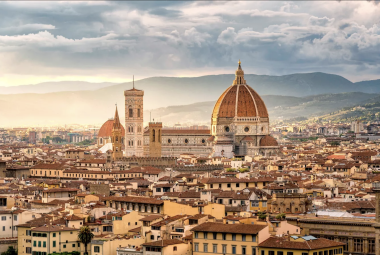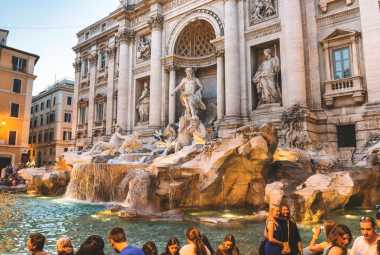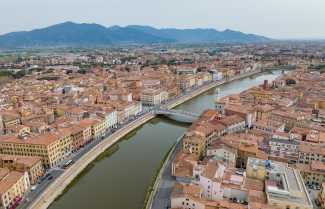A couple of years ago, before COVID absolutely ruined travel, my family and closest friends traveled to Costa Rica to celebrate my and my wife's 25th anniversary. We stayed in the Riu in Guanacaste and needless to say, we fell in love with this beautiful country.
Costa Rica has strikingly diverse terrain – lush forests, wildlife reserves, and tropical beaches – which has something to offer every traveler, regardless of their interests. Visitors to the Pacific Coast should head to Guanacaste and the Nicoya Peninsula's palm-fringed coastline for sun and surf if they are staying along the coast. Visit Puerto Viejo de Talamanca if you are staying in the Northern Plains or along the Caribbean coast before heading inland to zipline above the Monteverde Cloud Forest Reserve and hike the Arenal Volcano. There's something for everyone in this paradise, whether you're looking for sun, nature, or adventure. To help you navigate the abundance of natural wonders that Costa Rica has to offer, consider signing up for one of the country's best tours, which can be found here.
Guanacaste
Costa Rica's "Gold Coast" is one of the country's most unique destinations, and it's not just because of its secluded beaches; it's also because of its rich cultural heritage. The dry, sunny savannas of the region stand in stark contrast to the misty, cloud-covered rainforests (which have amazing resorts) found in other parts of the country. To the east, you'll be able to see the volcanoes that make up the Cordillera de Guanacaste. There are pockets of white sand flanking hotels and remote fishing villages all along the coast, which stretches all the way to the Nicaraguan border. The cowboy culture, which has thrived since the Spanish colonial period in the 19th century, can be found further inland in the state's interior. A few of the island's most notable attractions are the pristine, palm-fringed Playa Carrillo beach and the Rincón de la Vieja National Park. An additional must-see attraction is the Santa Rosa National Park, which is designated as a UNESCO World Heritage Site because it preserves the site of the 1856 Battle of Santa Rosa.
Recent visitors particularly recommend visiting Rincón de la Vieja National Park, which is home to hot springs and beautiful waterfalls, among other things. You'll also have the opportunity to witness some spectacular volcanic activity.
It is possible to fly into Daniel Oduber Quirós International Airport in Guanacaste, which is located on Costa Rica's north Pacific coast. For endless sunshine, lush vegetation, and wildlife viewing at its best, you'll want to visit Costa Rica during the summer months of December through April (the country's summer season).
Guanacaste Map
Arenal Volcano

Arenal, one of the world's most active volcanoes, towers over the surrounding landscape at more than 5,000 feet in height. A large number of people traveled to its base in large numbers during the latter half of the twentieth century to catch a glimpse of the glowing rocks and molten lava pouring down its sides. Arenal, on the other hand, did not always erupt in a blaze of lava, rocks, and ash. Arenal had been dormant for hundreds of years when it erupted on July 29, 1968, after a long period of inactivity. A powerful earthquake shook the region, and a lava explosion that followed wiped out three nearby villages. The volcano continued to erupt on a regular basis until 2010 when it was declared to be no longer active.
As part of today's itinerary, travelers will visit the Arenal Observatory Lodge, which is situated in an ideal viewing location along the volcano's northern flank. It is common for Arenal to be hidden by a dense layer of fog, but if you visit between February and April, you will have a better chance of seeing the volcano unobstructed. Recent visitors have stated that the trip is worthwhile, despite the fact that the quality of the view is heavily dependent on the weather. While you can hike the park's trails on your own with only a trail map, several recent visitors recommended hiring a guide to learn more about the volcano's history as well as the flora and fauna that inhabit the area. You can learn more about the volcano and the flora and fauna that inhabit the area by reading the following article.
From the nearby base village of La Fortuna, the Arenal Volcano can be reached in the shortest amount of time. This small town is perched on the eastern edge of Arenal Volcano National Park in northern Costa Rica, and it is a popular tourist destination. From La Fortuna, you can choose from a variety of tours. Tour prices begin at approximately $60 and increase depending on the level of experience you desire. The cost of general admission to the park is $15 per adult and $5 per child between the ages of six and twelve. You can get to Fortuna by car or bus from San José, which is about 80 miles southeast of the park and offers a variety of transportation options. The park is open daily from 8 a.m. to 4 p.m., with the last admission at 2:30 p.m. The park is open from 8 a.m. to 4 p.m. on weekends and holidays.
Where is Arenal Volcano
How far is Volcano from San Jose?
The drive from San Jose to Arenal Volcano National Park is 89.5 miles (144 km).
Is Arenal closer to San Jose or Liberia?
What is the best way to reach Arenal from Liberia or San Jose? It's really not much of a difference - maybe a half-hour difference. What you do after Arenal is dependent on where you are going; for example, if you are going to one of the North Pacific beaches or somewhere in the north, Liberia would be a more convenient option.
Click here to see a map of the volcanoes in Costa Rica.
Nicoya Peninsula

In addition to its sparkling 80-mile shoreline, the Nicoya Peninsula is home to beach-centric towns with cream-colored shores and dense forests. The Guanacaste province encompasses half of the peninsula, while the Puntarenas province encompasses the other half. The powdery sands of Nosara Beach line the western shore of the Nicoya Peninsula. East of the rugged coastline, you'll find fishing and cattle-ranching communities, as well as small towns. Visitors to the peninsula's sandy coast have been enticed to the area by an influx of restaurants and hotels following a significant increase in tourism that began in the 1970s.
Recent visitors have praised Nosara Beach's breathtaking sunsets, vibrant fish, and turquoise waters, describing them as "ideal for surfers and beach lovers alike." However, be warned that there is little shade (and it gets hot!) and the undertow can be difficult to navigate; sunset walks on the beach are strongly recommended. In addition to these destinations, there is Mal Pas and Montezuma, a quaint coastal town that offers affordable hotel accommodations and natural splendors such as majestic waterfalls and gently lapping cerulean waves.
Located off the coast of Costa Rica's northwestern tip, the Nicoya Peninsula stretches into the Pacific Ocean. Car travel from San José to the peninsula will take you approximately four or five hours, depending on the speed of your vehicle. Alternatives include flying directly into Daniel Oduber Quirós International Airport if you do not want to make a stopover in San José. Keep in mind that during the rainy season (from April to November), some of the roads may become impassable due to flooding.
Corcovado National Park

Travelers come to this 160-square-mile misty rainforest for the variety of wildlife that can be found there. Throngs of buzzing insects and chirping birds can be seen and heard as you stroll through the lush jungle environment. You're likely to come across macaws, tapirs, jaguars, spiders, and howler monkeys as you trek along the hazy trails.
It has been suggested that visitors arrive early in the day (between 7 and 9 a.m.) to increase their chances of seeing wildlife, but no matter when you go, there will be plenty to see. You'll need at least two or three days to take in all of Corcovado's sights and sounds, so plan on spending at least that much time there. Alternatively, you can take a break from hiking by heading to the 23 miles of beaches but be warned that the sand is extremely hot.
Costa Rica's Corcovado National Park is located along the country's southern Pacific coast, with the closest towns being Drake Bay, Puerto Jimenez, and Carate, all of which are within driving distance. The park can be reached through a number of different park entrances, each of which is marked with a ranger station. San Pedrillo, Los Patos, and La Leona are the three main entry points into the park. These are conveniently located at various points around the park's perimeter. The ranger stations in Corcovado National Park are open daily from 7:30 a.m. to 5 p.m., except on holidays. Permits are required and cost $15 for adults to enter the park. Permits can be obtained through the services of a travel agent. Visitors in the past have praised Osa Wild and the Corcovado Information Center.
Manuel Antonio National Park

The National Park of Manuel Antonio is one of Costa Rica's smallest protected green spaces, but don't let its small size deter you from visiting. Throughout the park's three square miles, you'll find untamed beaches, secluded coves, nature trails, and a dense canopy of tropical foliage. You can relax on the park's coastline or take a stroll along one of the walking paths, where you can see rare birds, camouflaged iguanas, and purple-and-orange crabs, among other things. As a fan of furry creatures, you'll be delighted to learn that this park is home to so many monkeys that the park authorities decided to construct a suspension bridge to allow them to roam freely throughout the park.
Travelers recommend visiting Manuel Antonio's remote white-sand beaches, which are located in the park's southeastern tip and allow visitors to relax under the shade of palm trees. Reviewers also suggest bringing a picnic lunch to enjoy while you're there. But you'll want to keep an eye on your food because the monkeys have been known to steal food from visitors. Consider arriving at the park as soon as it opens at 7 a.m. to take advantage of the park's untouched landscape and avoid the crowds.
Located about 100 miles south of San José in Costa Rica's Central Pacific region, Manuel Antonio National Park is a popular tourist destination. From San José, you can travel to the national park by bus or car, which will take approximately two to three hours total. Some guided tours may include transportation to and from the park as part of the package. In addition to public buses, there are directo (direct) buses that run between San Jose and the park, which will save you time by avoiding a long journey with multiple stops. Visitors are welcome from 7 a.m. to 4 p.m., Tuesday through Sunday, during regular business hours. Visitors over the age of 12 will be charged $16 for admission. Children under the age of 11 are admitted free of charge. Tours with a guide are also available, with prices starting at $51 for adults and $35 for children. The official website of the park contains additional information.
Jacó

Jacó, Costa Rica's most beautiful town, is located far away from the foggy rainforests of northern Costa Rica. It is a bustling hub of shops, restaurants, and beachfront hotels. Also, it's one of the most accessible beachside getaways from San Jose, the country's capital. Surfers should head to the sprawling palm-lined shores of Hermosa and Esterillos Este for the best waves in the region. If you're looking for a quiet beach day away from the crowds, consider Playa Mantas and Playa Blanca, which are both popular with locals and visitors alike. The Pura Vida Gardens and Waterfalls, for example, are a wildlife haven where visitors can spot the area's most beloved residents – colorful birds and monkeys – and take in the views of the surrounding soaring coastal mountains. Whatever you do, make sure to save some energy for the exciting nightlife, which is known for its activities geared toward adults only.
Recent visitors have identified one significant disadvantage: the city's widespread popularity. However, previous visitors have stated that it is well worth spending a day or two at this sprawling beach retreat if you don't mind sharing it with others.
Jacó is a short car ride away from San José; it is located approximately 60 miles southwest of the capital city. You'll travel west on Highway 27 until you reach the Jacó and Quepos exit, where you'll turn left. If you prefer not to drive, you can take advantage of the numerous buses that leave from San José on a daily basis.
Monteverde Cloud Forest Biological Reserve

Imagine yourself winding your way through a misty oasis, where towering trees surround you in a sea of green. Monteverde's lush 25,700-acre reserve contains more than 100 mammal species, 400 bird species, and 2,500 plant species, all of which are unique to the area. During your stroll along one of the hiking trails, you may come across a small hummingbird or a resplendent quetzal, both of which are likely to be eating ripe aguacatillo (a fruit similar to an avocado).
Despite some travelers' dissatisfaction with the high number of visitors and the difficult trek to the reserve, the forest is widely regarded as a must-see example of Costa Rica's rich wildlife diversity and a must-see destination. Taking a Sky Walk (hanging bridges) or Sky Trek (zip lining) tour, as recommended by recent visitors, is a great way to avoid the crowds and see the reserve from above. The official website of Sky Trek can be consulted for additional information. In the event that you'd prefer to stay on solid ground, the reserve also offers year-round guided walking tours of the area. If you've come to the reserve in search of wildlife, previous visitors highly recommend hiring a guide to help you find it.
A three-hour car ride northwest of San José will take you to the Monteverde Cloud Forest, which is located in the Northern Plains. The cost of admission to the Monteverde Cloud Forest is $20 per person, with discounts available for children. Guided tours are available for an additional fee. The reserve is open to visitors from 7 a.m. to 4 p.m., seven days a week. For more information, visit the official website of Monteverde, which is maintained by Costa Rica's Tropical Science Center.
La Paz Waterfall Gardens

La Paz is an abbreviation for Catarata La Paz (also known as "peace waterfall"). At first glance, La Paz appears to be a peaceful and serene place. However, if you take a closer look, you'll notice that this rainforest is alive with activity. Wildlife enthusiasts will delight in the variety of creatures on display in this wildlife haven, which includes everything from croaking frogs and fluttered butterflies to rumbling jaguars and howling spider monkeys. Moreover, there is plenty to see and appreciate for nature lovers, from the garden's five flowing waterfalls to its vibrant orchids and sea of leafy green canopies.
Several recent visitors have stated that the waterfalls are "amazingly beautiful," and that it is a must-see for anyone visiting Costa Rica for the first time. Others expressed their appreciation for the staff's friendliness and knowledge. According to visitors, if you don't want to pay the admission fee, you can see the waterfalls from the highway if you drive slowly enough. However, many people felt that the entrance fees were well worth it because of the experience.
La Paz is a city in Costa Rica's Northern Plains that is located along the northeastern edge of Volcán Poás. Following the Pan-American Highway from San José, the quickest and most direct way to get to La Paz is to take a one-hour bus, taxi, or car ride from the capital city. You can also make reservations for transportation through the site. Guests are welcome to visit the park from 8 a.m. to 5 p.m., seven days a week. It is recommended that guests allow at least two hours to explore. The cost of admission, which includes access to all trails and attractions, is $44 for adults and $28 for children ages three to twelve. If you want to eat in the park, there is also a reasonably priced and reasonably expansive buffet lunch (for an additional fee).
Puerto Viejo de Talamanca

With reggae music, funky bamboo bars, and a wild nightlife, the small village of Puerto Viejo de Talamanca, on Costa Rica's Caribbean coast, comes to life. Surfers congregate on Cocles Beach, which is fringed with coconut palms; nature enthusiasts travel inland to explore rainforests; and foodies savor the delectable cuisine available in downtown. Dusty biking and walking paths wind their way through tropical farms and gardens, away from the beaten path. Along the coast, you'll come across isolated bungalows and stretches of sand that are devoid of people.
Travelers recommend visiting Playa Negra's black-sand beach, which is located in the northwest end of Puerto Viejo de Talamanca and offers a less touristy alternative to the city's other beaches. Visit during the months of September and October for the best chance of seeing some sunshine in this often-humid tropical region.
The town of Puerto Viejo de Talamanca is located approximately 11 miles south of Cahuita in the province of Limón. The quickest and most convenient way to get to Puerto Viejo de Talamanca from Cahuita is by car or public bus. The drive from San José will take three to four hours by car, and the bus ride will take approximately five hours. To learn more about getting around in Costa Rica, see our Getting Around in Costa Rica guide.
Caño Negro Wildlife Refuge

Birdwatchers will be delighted to know that this swampy wildlife refuge is home to thousands of water birds, including jabiru storks, cormorants, ducks, and roseate spoonbills, among others. The Cao Lake and the Fro River are both located near La Fortuna, and as you stroll along the Cao Lake and the Fro River, you'll notice an abundance of sea life. Also present in the swamps are large crocodiles crawling through the mud, and you'll see jaguars as well as turtles and sloths frolicking about. However, if you're in Costa Rica between January and April, you should avoid visiting Cao Negro because the lagoon becomes dry during this time period, and the local sea creatures migrate to other locations.
The refuge's friendly staff has received high praise from recent visitors, who have noted that they are well-versed in the area's rare bird and wildlife species and where to find them. Additionally, many visitors suggest bringing insect repellent and binoculars.
Visitors should plan a day trip from La Fortuna, which is about 60 miles south of Cao Negro and serves as a jumping-off point for day trips to the refuge, which is located near the Nicaraguan border. Several full-day tours are available from La Fortuna, including the following: Canoa Aventura and Arenal Expeditions have both received positive feedback from previous visitors. The refuge is open to the public from 8 a.m. to 4 p.m., seven days a week.


